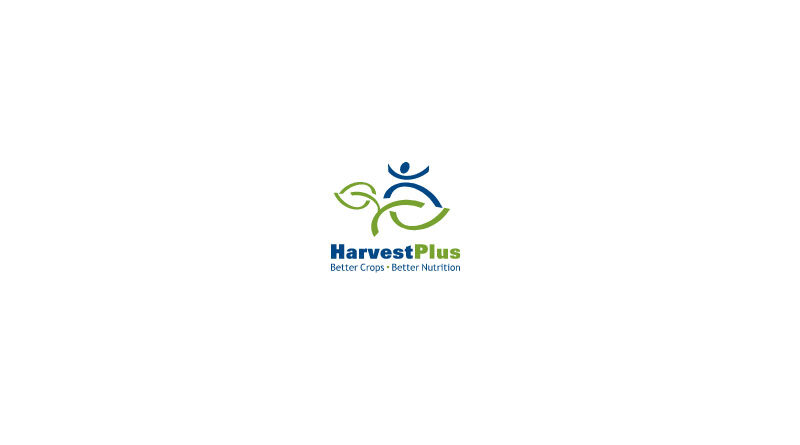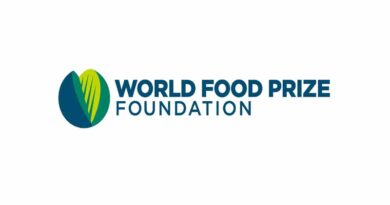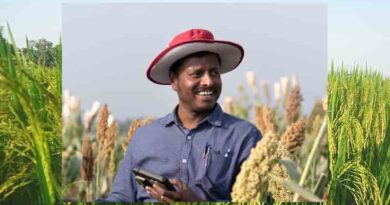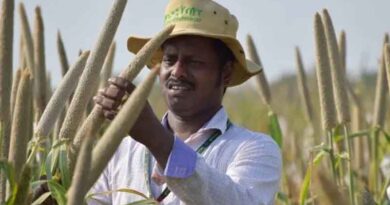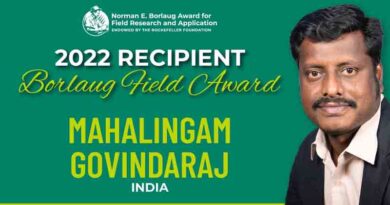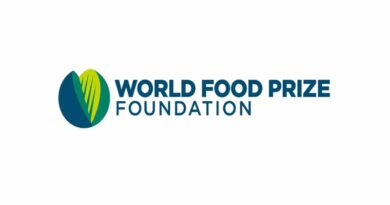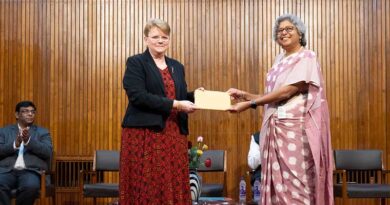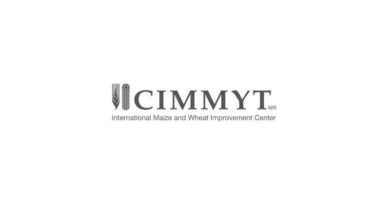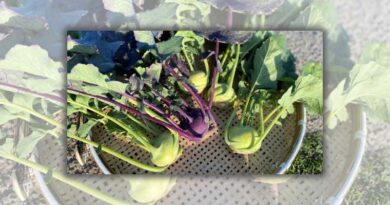A Conversation with Dr. Mahalingam Govindaraj, the 2022 Borlaug Field Research Award Recipient
13 September 2022, New Delhi: The World Food Prize Foundation has announced that Dr. Mahalingam Govindaraj, a Senior Scientist for Crop Development at the CGIAR’s HarvestPlus program based at the Alliance of Bioversity International and CIAT in India, will receive the 2022 Norman E. Borlaug Award for Field Research and Application,. The Foundation said Govindaraj is being recognized for his outstanding leadership in mainstreaming biofortified crops, particularly iron pearl millet (IPM), in India and Africa. The award is endowed by the Rockefeller Foundation.
For more than a decade, he has directed the development and dissemination of high-yielding, high-iron and high-zinc pearl millet varieties that have contributed to better nutrition for thousands of farmers and their communities. As of the end of 2021, nearly 220,000 smallholder farming households in India were growing IPM.
Development of IPM was funded by the HarvestPlus program and undertaken with research partners at the International Crops Research Institute for the Semi-Arid Tropics (ICRISAT), where Govindaraj was employed between 2011 and 2021. Govindaraj is now part of the CGIAR HarvestPlus team that leads a partner-driven delivery strategy for IPM, zinc wheat, and other biofortified crops. Strong Indian and African government endorsement is helping to set the stage for rapid IPM scaling in coming years.
Govindaraj spoke with Peter Goldstein, head of strategic communications at HarvestPlus, to discuss the why, how, and future of IPM, and his role in developing varieties of this nutritious staple crop.
Q: Why was millet—specifically pearl millet—selected as a focus crop for biofortification?
A: Millet is an important staple crop in India as well as in sub-Saharan Africa, particularly in the Sahel region. Globally, this grain is a staple for 100 million people. Pearl millet represents 50 percent of the 20-25 million hectares of millet grown around the world. India is the largest producer of pearl millet.
Given the high levels of iron deficiency (and related anemia and other health problems) in these regions, iron pearl millet was viewed as a logical breeding goal. Millet is also naturally well-adapted to dryland regions, making it particularly interesting given current climate trends.
Q: Scientifically, what were some of the key challenges to address during development of IPM?
A: When I began as a millet breeder (at ICRISAT), the greatest challenge was acceptance of the development of a nutrient trait by the breeders. They, and the whole multidisciplinary development team, were skeptical about the feasibility of adding this trait; they were worrying that it would add more time to the process and take up resources, dilute yield gains, and ultimately reduce the probability of success in product release.
But we were very optimistic; we saw that there was untapped nutrition potential in this crop. The HarvestPlus financial support at the time was very crucial to keep everyone’s motivation going ahead. After a few years of struggle, we knew that (the nutrient traits) can be readily included alongside other agronomic traits.
Q: The first India release of an IPM variety, Dhanashakti, came in 2014. How long did it take to get there?
A: It took close to a decade from Day One of investment. ICRISAT started initial research as soon as the CGIAR biofortification program began (in 2003/2004) for an initial five-year phase till 2008. This continued under the HarvestPlus program.
The first variety, Dhanashakti, was an open-pollinated variety, but hybrids were really more in demand—around 60 to 70 percent of the pearl millet planted area in India is hybrids. Therefore, after Dhanashakti, we moved our focus more to the hybrid development. And the subsequent hybrid varieties were developed very quickly using high-iron male-sterile lines (female) and restorers (male).
Q: After development, what was the strategy for delivering IPM seed to farmers?
A: Initially, we partnered with state agricultural universities, particularly in Maharashtra, Haryana, and Rajasthan states, but many other state university partnerships happened as well. The private sector came in after Dhanshakti was released. There were some proactive seed companies like Nirmal Seed who wanted to commercialize high-iron seed based on a license with the universities. [The private companies] received a lot of support in the initial years in terms of multiplying, promotional events and marketing and selling the seed.
Q: What methods have been used to promote IPM to farmers?
A: We have worked in parallel with both the public and private sectors, especially with the National Pearl Millet Coordinated Program, led by ICAR [note: the Indian Council of Agriculture Research]. In every activity they have been our key partner and a leader in national [crop] testing and demonstrations. They started promoting IPM through national demo plots and at various farmers’ events.
And Nirmal Seed also played a key role in the initial years to promote IPM, especially through “mobile vans” with loudspeakers driven through farming communities, to explain that this new variety brings better nutrition as well as yield. Many farmers took it up, especially in Maharashtra, where the available varieties are well-adapted to local conditions,. It performs well in that location’s soil and rainfed cultivation, and people there like the large grain size and early maturity, especially in the southern part of India. Also it is a greyish colored seed, which they prefer to the yellowish or greenish seeds preferred in the north.
Q: How is it that demand for hybrid IPM is so strong in relatively low-income rural areas?
A: Like other major crops, pearl millet seed market in India is well developed and very competitive and efficient, and the farmer seed replacement rate is thus relatively high, at about 90 percent. IPM hybrid seed is also cheap and less quantity is needed to plant relative to other types of crops (like rice, wheat, or maize)—you only need three kilograms of seed per hectare!
The hybrid is also a unique combination (of traits) that brings higher yield, uniform flowering and a uniform harvest. Farmers also value other traits of hybrids like pest resistance, grain color, etc. The hybrid gives a yield advantage of 20-30 percent over the open-pollinated varieties (e.g Dhanashakti).
Q: The Indian national Government has supported development of IPM by setting minimum levels of iron as well as zinc in new pearl millet varieties. How did this come about?
A: We tried many other approaches before pursuing the minimum levels. In particular, we worked with ICAR and coordinated a specific pearl millet program for several years with special trials for IPM to drive short-term product development. However, we understood this approach would not be sustainable in the long term. So at a certain point, it was agreed that it would be more practical to just set minimum levels, which represented the average iron and zinc levels in the more than 120 commercial cultivars that had been developed up to that point.
These standards encourage all public and private sector actors to develop the product for national testing and release. We will also be moving to higher biofortification targets (i.e. >70 mg/kg Fe) in the near future. We are currently having meetings to look into raising the minimum levels, possibly next year, which has been declared the International Year of Millets.
Q: Where do we go from here in the Indian IPM market? What do you see as its potential?
A: So far, basic challenges we had to address was: whether IPM could be bred along with good yield, without compromising the existing preferred traits (early maturation, taste, resistance etc.,); that the micronutrient is bioavailable to people through consumption; and that seed multiplication can be regularized and mainstreamed.
The answer has been “yes” to all these questions, so now the fourth area is how we can scale up. Scaling comes through the industry, the consumer, and government bodies that largely drive the momentum. The minimum standards help a lot, but the market and procurement need to be built up.
On the commercial side, HarvestPlus has created a Publicly Available Standard for IPM grains, which will help catalyze activity by commercial actors. It increases their confidence in the product and shows them how to go about procuring IPM to make nutritious food products.
The second thing is how we can leverage the government system to use IPM in such large-scale programs as the Mid-day Meals Scheme (in India) in the coming years; especially as we are going into the International Year of Millets, it should be procured by districts or states who already largely consume millet. IPM can also be introduced into meals programs for children who are most vulnerable to micronutrient malnutrition. The government also should accord IPM a “specialty” status so that it fetches a higher procurement price, given its nutritional value, encouraging more farming families to grow it.
In addition, to reduce the need to continually monitor nutrition stability in varieties, (due to market grain adulteration and other issues), mainstreaming micronutrient targets in regular pearl millet breeding programs of the public and private sector would be highly valuable to creating competitive commercial products in future.
IPM is one of the cheapest vehicles that can deliver both food and nutrition security, especially in millet-consuming regions. This needs to be recognized more widely. It also comes in the context of climate resilience, and discussions of how we can mitigate climate change through agriculture, and IPM addresses that. The COVID-19 pandemic taught us a lesson on how nutrition is important for human well-being, and IPM certainly can contribute, provided industries and country policies support it.
Also Read: Tractor sale in India lowest in two months; 32 percent down in August 2022
(For Latest Agriculture News & Updates, follow Krishak Jagat on Google News)

